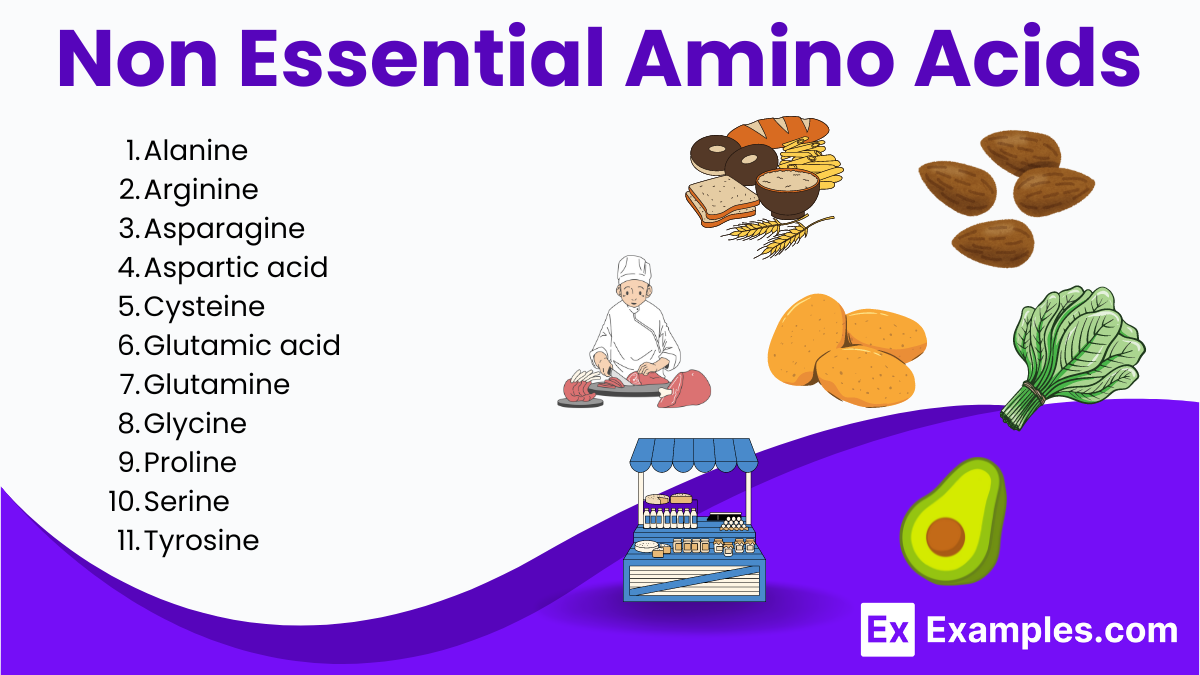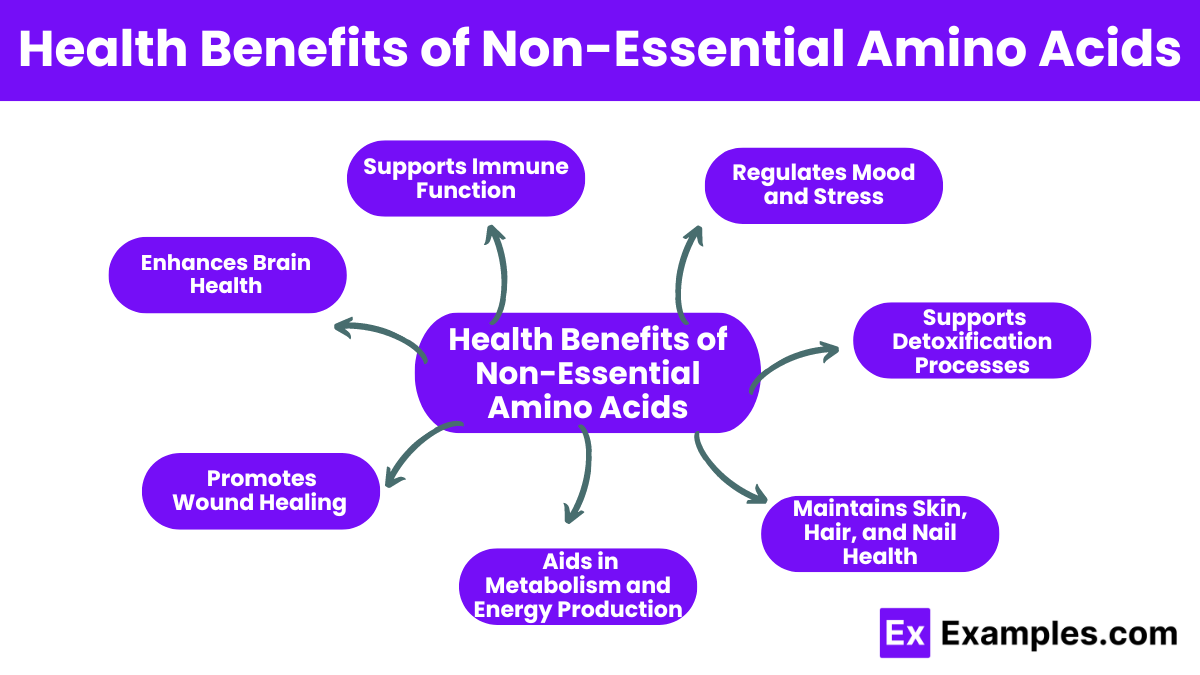What defines a nonessential amino acid?
It cannot be synthesized by the body
It must be obtained from the diet
It can be synthesized by the body
It is always present in protein sources


Nonessential amino acids play a crucial role in human health and biological processes, despite their misleading name. The term “nonessential” does not imply that these amino acids are unimportant; rather, it means that the body can synthesize them internally and does not require them from dietary sources. These amino acids support various functions including protein synthesis, cell growth, and tissue repair. They also contribute to the production of hormones, neurotransmitters, and other vital molecules. Understanding the role and importance of nonessential amino acids provides insight into their impact on overall health and well-being.
Nonessential amino acids are those amino acids that the human body can synthesize on its own and do not need to be obtained directly through the diet. These amino acids are crucial for various bodily functions, including protein synthesis, enzyme production, and metabolism, but because the body can produce them, they are labeled as “nonessential” in the context of dietary requirements.
All amino acids, including nonessential ones, are building blocks for proteins. Proteins perform countless functions in the body, such as catalyzing metabolic reactions, replicating DNA, responding to stimuli, and transporting molecules from one location to another.
Nonessential amino acids contribute to cell growth and the repair of tissues throughout the body. They are particularly important in rapidly dividing cells, such as those in the skin, hair, and immune system.
Many nonessential amino acids are involved in the production and function of enzymes. Enzymes are proteins that speed up chemical reactions in the body, essential for digestion, energy production, and other metabolic processes.
Certain nonessential amino acids serve as precursors or components of neurotransmitters, the chemical messengers that transmit signals across nerve cells. For example, aspartate and glutamate are important in brain function and cognitive ability.
Nonessential amino acids like glutamine are critical for the proper functioning of the immune system. Glutamine, for instance, provides energy to immune cells and is crucial during times of stress or illness when the demand for glutamine increases significantly.
Some nonessential amino acids play a role in detoxifying harmful substances in the liver. For instance, glycine aids in the synthesis of glutathione, a major antioxidant that protects cells from oxidative damage and helps detoxify chemicals.
Although not their primary role, some nonessential amino acids can be used to produce energy through various metabolic pathways, especially during prolonged exercise or periods of fasting.
Nonessential amino acids are involved in the synthesis of hormones that regulate metabolism, stress responses, and growth. For instance, tyrosine is a precursor for the synthesis of thyroid hormones and adrenal hormones like adrenaline.
Nonessential amino acids, which the body can synthesize on its own, each have unique molecular structures that are crucial for their specific functions. Here’s an overview of the molecular structures of nonessential amino acids:

Non-essential amino acids like glutamine are vital for the proper function of the immune system. Glutamine, for instance, serves as a fuel source for white blood cells and other immune cells, helping to maintain their function and prevent infections.
Amino acids such as glutamic acid and aspartic acid are important for normal brain function. They serve as neurotransmitters and are involved in signaling pathways within the brain that enhance cognitive processes and emotional well-being.
Arginine and glutamine play significant roles in healing and tissue repair. Arginine is essential for the production of nitric oxide, which improves blood flow and oxygen delivery to healing tissues. Glutamine, on the other hand, helps in cellular proliferation necessary for repairing damaged tissues.
Amino acids such as alanine and aspartic acid are involved in the metabolism of glucose and fatty acids, providing energy to cells throughout the body. This is particularly important during periods of intense physical activity or stress.
Cysteine, a sulfur-containing amino acid, is crucial for the synthesis of keratin, a protein that is a major component of skin, hair, and nails. It helps in maintaining their strength, elasticity, and appearance.
Glycine plays a critical role in the body’s detoxification process. It helps in the creation of glutathione, a major detoxifying agent in the body, which protects cells from oxidative damage and helps remove harmful substances.
Tyrosine is a precursor to several important neurotransmitters, including dopamine, epinephrine, and norepinephrine. These chemicals are crucial for regulating mood, stress response, and mental alertness.
Glutamine is an essential fuel source for the cells lining the intestines and can help maintain the integrity of the gut barrier. This is vital for preventing the leak of harmful substances into the bloodstream and for the absorption of nutrients.
Amino acids like proline and arginine are important for muscle metabolism. They help in muscle repair, growth, and maintenance, which are crucial for athletes and those engaged in regular physical activities.
Arginine is known for its ability to improve blood flow by dilating blood vessels. This can help lower blood pressure and improve cardiovascular health.
Nonessential amino acids, while synthesized by the body, are still crucial to various physiological processes. A deficiency in these amino acids, although rare due to their endogenous production, can occur under certain conditions like malnutrition, illness, or metabolic disorders, leading to various health issues.
Conditionally essential amino acids occupy a unique position between essential and nonessential amino acids. Unlike essential amino acids, which the body cannot synthesize and must obtain from the diet, or nonessential amino acids, which the body can produce on its own, conditionally essential amino acids are typically synthesized by the human body. However, under certain circumstances such as illness, stress, or intensive physical activity, the body’s ability to produce these amino acids may not meet its needs. In such cases, these amino acids become “conditionally essential,” meaning they must be obtained through the diet.
Some of the common conditionally essential amino acids include arginine, cysteine, glutamine, tyrosine, glycine, ornithine, proline, and serine. Each plays critical roles in various physiological processes:
Out of the 20 standard amino acids, 11 are considered non-essential for humans.
Yes, humans have 11 non-essential amino acids that the body can synthesize on its own.
No, there are 11 non-essential amino acids, not 9. The body synthesizes these without dietary sources.
Use mnemonics: “Any Help In Learning These Little Molecules Proves Truly Valuable” for essential amino acids.
Memorize the mnemonic: “PVT TIM HALL” (Phenylalanine, Valine, Threonine, Tryptophan, Isoleucine, Methionine, Histidine, Arginine, Leucine, Lysine).
Text prompt
Add Tone
10 Examples of Public speaking
20 Examples of Gas lighting
What defines a nonessential amino acid?
It cannot be synthesized by the body
It must be obtained from the diet
It can be synthesized by the body
It is always present in protein sources
Which of the following is considered a nonessential amino acid?
Lysine
Methionine
Glutamine
Tryptophan
How many nonessential amino acids are there?
9
11
20
22
Which amino acid is often classified as both essential and nonessential depending on circumstances?
Serine
Arginine
Tyrosine
Glycine
What role do nonessential amino acids play in protein synthesis?
They are not involved in protein synthesis
They serve as building blocks for proteins
They inhibit protein synthesis
They act as energy sources only
Which of the following nonessential amino acids is important for immune function?
Glutamine
Aspartic acid
Proline
Cysteine
What is a common source of nonessential amino acids in the diet?
Animal proteins
Vitamins
Minerals
Fiber
Which nonessential amino acid is important for neurotransmitter synthesis?
Glycine
Valine
Leucine
Isoleucine
Which of the following statements about nonessential amino acids is true?
They are always more abundant than essential amino acids
They can be made from essential amino acids
They have no physiological function
They must be supplemented in all diets
What happens to nonessential amino acids during periods of fasting or illness?
They are no longer produced
They are utilized more for energy
They increase in the body
They become essential
Before you leave, take our quick quiz to enhance your learning!

